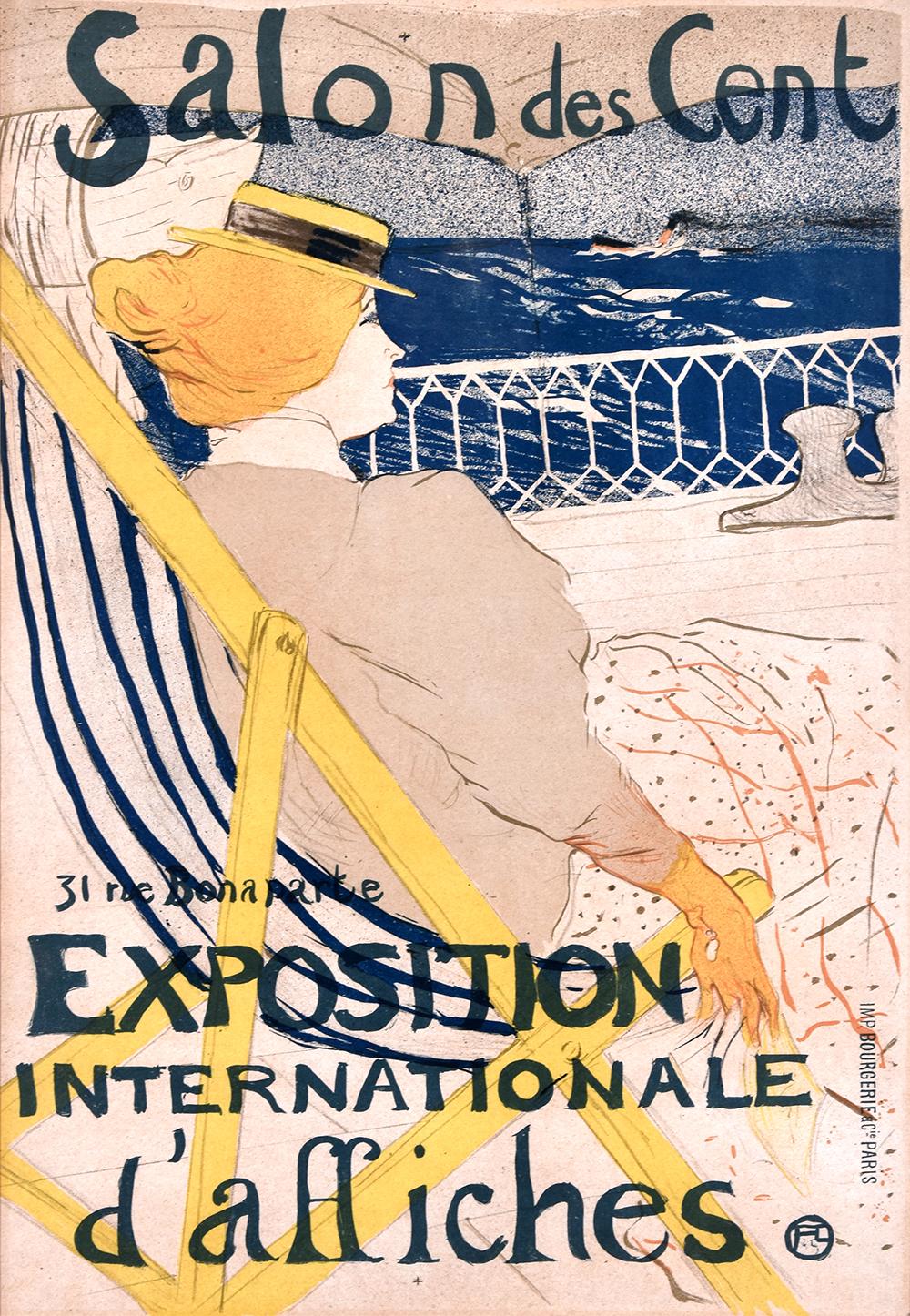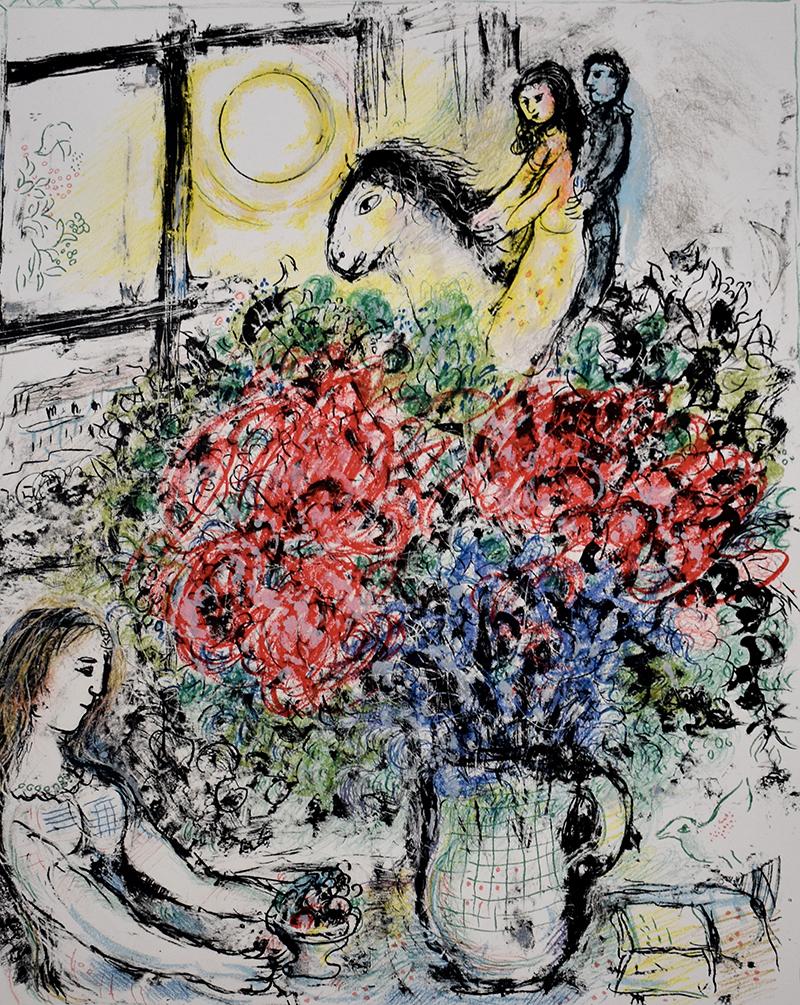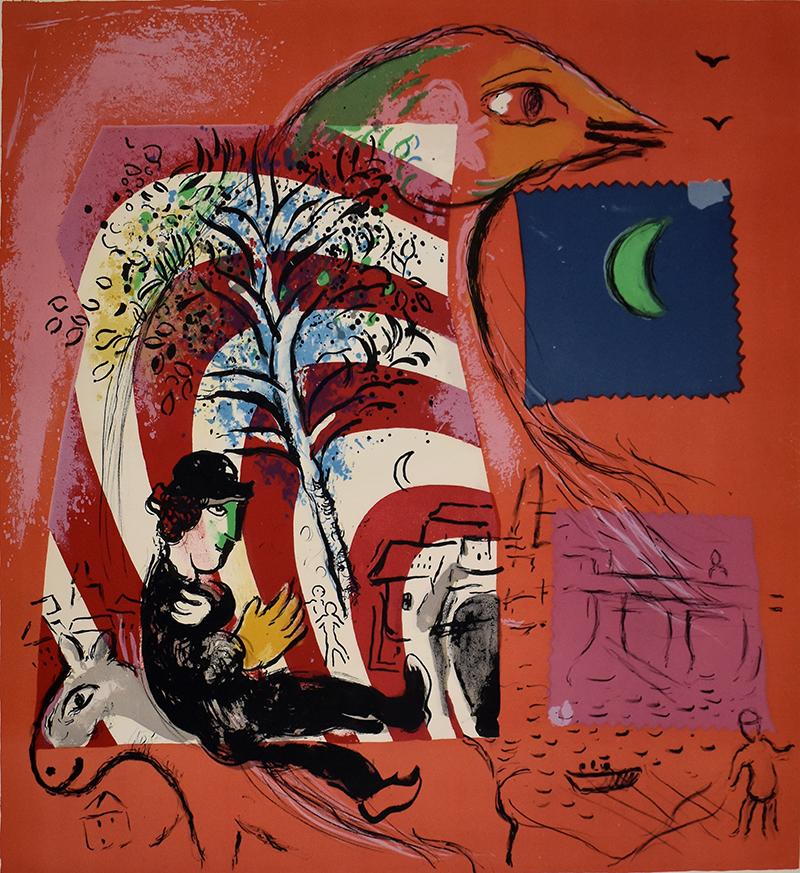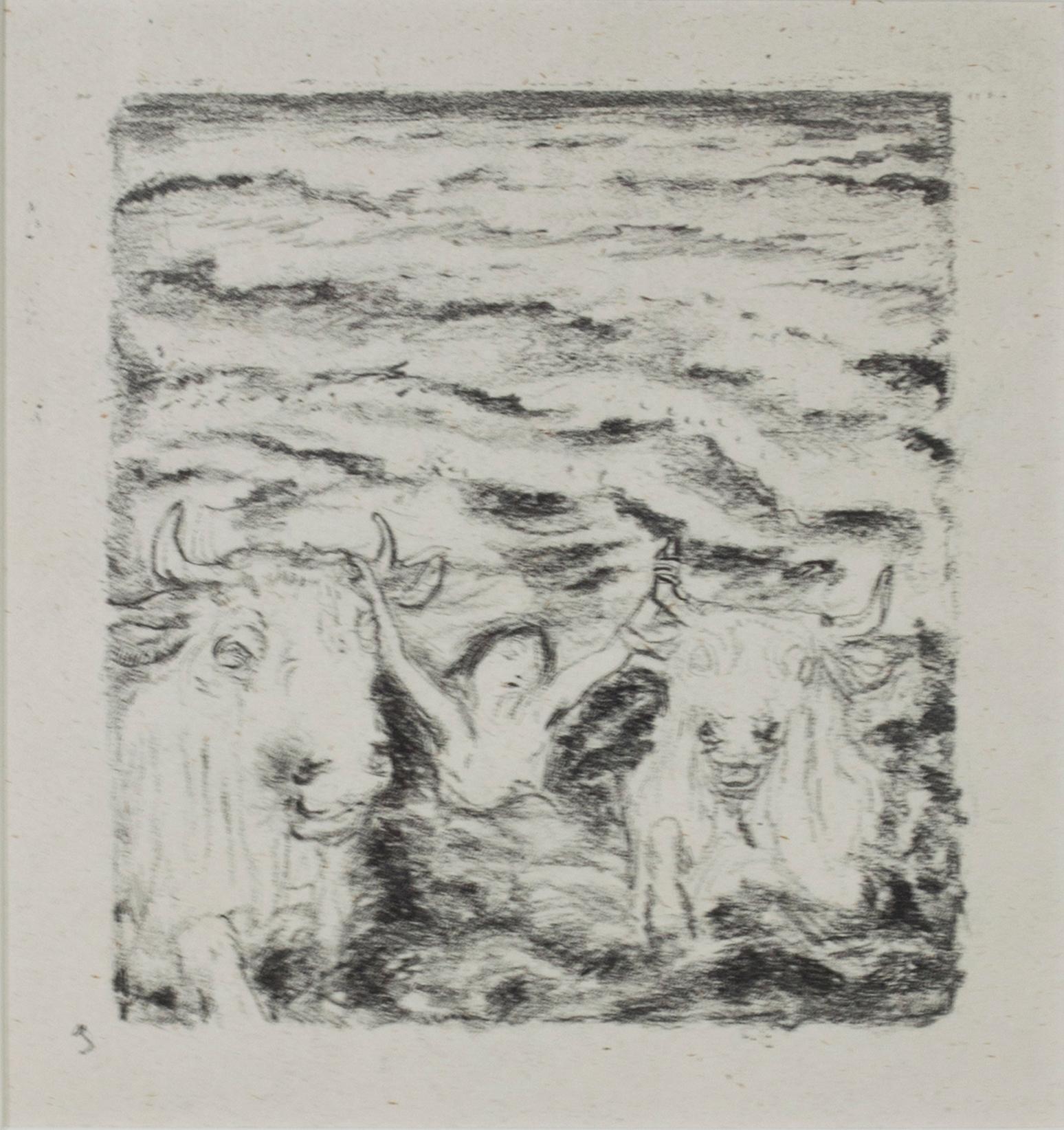Edouard VuillardCouverture pour Douze Lithographies en Couleurs, ou Passage et Interieurs1896-1898
1896-1898
About the Item
- Creator:Edouard Vuillard (1868-1940, French)
- Creation Year:1896-1898
- Dimensions:Height: 20.25 in (51.44 cm)Width: 15.75 in (40.01 cm)
- Medium:
- Movement & Style:
- Period:
- Condition:
- Gallery Location:Fairlawn, OH
- Reference Number:
Edouard Vuillard
French artist Edouard Vuillard was known for depicting intimate glimpses of Parisian life around the turn of the 20th century. His figurative prints, drawings and figurative paintings were concerned not just with their subjects but with the private surroundings of their homes and gardens. Vuillard was strongly influenced by Postimpressionist painters like Paul Gauguin.
Vuillard was born in the French commune of Cuiseaux in 1868. His family moved to Paris in 1877, and six years later, he received a scholarship to study at the prestigious Lycée Fontaine (now called the Lycée Condorcet). He graduated in 1885, joined the studio of painter Diogène Maillart and enrolled in courses at Académie Julian. Two years later, he was also accepted to the École des Beaux-Arts.
In 1889, the young Vuillard began meeting with a group of Symbolist painters and mystics known as Les Nabis (the prophets). For the subsequent decade, he was a prominent member of the group. During this period, Les Nabis and Vuillard himself were influenced by Japanese woodblock prints, featuring a blending of shapes and colors and a shallow depth of field. Any figures in the paintings seemed to meld into the background, and the loose brushwork prefigured the advent of abstract art.
Les Nabis broke up in 1900, and Vuillard's work took on a brighter and more colorful appeal. He turned his attention to painting gardens, joining a rich tradition of French garden painters. Vuillard was nominated for the Légion d'honneur in 1912, but he refused on the grounds that he did not seek compensation for his work other than the esteem of people with good taste.
After a brief stint in the military during World War I, Vuillard returned to life as a painter. In the 1920s, he was commissioned for portrait paintings by prominent Parisians like director Sacha Guitry, the Contesse Marie-Blanche de Polignac and fashion designer Jeanne Lanvin.
Throughout the 1930s, Vuillard received numerous commissions from the French government. In 1938, he had a major retrospective at the Musée des Arts Decoratifs and was elected to the Académie des Beaux Arts. He died in 1940, at the age of 71.
On 1stDibs, find Edouard Vuillard prints, drawings and paintings.
- ShippingRetrieving quote...Ships From: Akron, OH
- Return PolicyA return for this item may be initiated within 10 days of delivery.
- SevillanasLocated in Fairlawn, OHSevillanas Etching and color aquatint on laid watermarked paper, c. 1900 Signed by the artist in pencil lower right (see photo) Editioned in pencil lower left corner of sheet Publish...Category
Early 1900s Post-Impressionist Figurative Prints
MaterialsAquatint
- Les Amateurs d'EstampesBy Félix VallottonLocated in Fairlawn, OHLes Amateurs d'Estampes Woodcut, 1892 Initialed in the plate lower left Titled below image: "Gravure originale sur bois par F. Vallotton" Reference: Valloton and Goerg 107c, with the purple address stamp upper right center (see photo) Condition: Excellent Aging to sheet One spot of printers ink outside of the image in the upper margin Block size: 7 3/8 x 10 inches Sheet size: 10 1/8 x 12 3/4 inches Condition: Very good, aging (yellowing) to the paper Provenance: Edmund Sagot (1881-1917), noted Parisian art dealer and print publisher By decent Vallotton was a noted member of the Nabi, highly regarded for his paintings and original woodcuts. His works are in most major museums. Thank you for your interest in the Vallotton woodcut, Les Amateurs d’Estampes (Print Lovers). It depicts print collectors admiring the new offerings in the window of the Sagot Gallery in Paris. The woodcut is the second published version of the address card for Edmund Sagot the noted Paris art gallery with the change of address in lavender ink. It had moved and hence the change of address was necessary for publicity. The woodcut was created in 1892. It is unsigned as all the address cards are. There are two size variants, this being the larger of the two. It is printed on a tan wove paper. It is in excellent original condition. The provenance is from the Heirs of Edmund Sagot (1857-1917). by decent. The Sagot family was noted for selling posters, fine prints and original works of art. Edmund’s brother Clovis, was Picasso’s first dealer in Paris. The image is documented in the Vallotton and Goerg catalog raisonne in entry 107c Impressions of this image can be found in many museums including: Bibliothèque nationale de France De Young/Legion of Honor/Fine Art Museums of San Francisco Newfields, Indianapolis Museum of Art National Gallery of Australia Musee Des Beaux-Arts du Canada Van Gogh Museum Museum of Fine Arts, Houston Portland Art Museum Kunst Museum, Holland Philadelphia Museum of Art Yale University Art Gallery Félix Vallotton, in full Félix Edouard Vallotton, (born December 28, 1865, Lausanne, Switzerland—died December 28, 1925, Paris, France), Swiss-born French graphic artist and painter known for his paintings of nudes and interiors and in particular for his distinctive woodcuts. Vallotton was raised in a traditional bourgeois and Protestant household. After completing secondary school, he left Lausanne in 1882 for Paris to pursue art studies. Though he was accepted by the École des Beaux-Arts, he chose to attend the less traditional Académie Julian, where he studied with French painters Jules Lefebvre and Gustave Boulanger and enjoyed virtually free rein over his pursuits. He took the opportunity to study graphic arts—lithography and other methods of printmaking. He exhibited publicly for the first time in 1885 at the Salon des Artistes Français—the oil painting Portrait of...Category
1890s Post-Impressionist Figurative Prints
MaterialsWoodcut
- CorinneBy Maurice Réalier-DumasLocated in Fairlawn, OHSigned in the stone lower left Edition: 2,000 Provenance: Stedelijk Museum Schiedam, their stamp inside of portfolio, not in Lugt References And Exhibitions: Published...Category
1890s Figurative Prints
MaterialsLithograph
- Franky and Johnny in ParisBy Adolf DehnLocated in Fairlawn, OHSigned, dated, and editioned in pencil by the artist Edition:30, plus trial proofs; this print numbered 23/30 Printed by Edmond Desjobert, Paris Provenance: Estate of the artist The image is loosely based on the tragic love story of Frankie and Johnny, memorialized in Jazz, Blue, Country, Rock a Billy and Motown. At least 256 recordings of "Frankie and Johnny" have been made since the early 20th century. Inspired by a traditional song first recorded by The Leighton Brothers in 1912. Among the artist who have recorded the varying versions of the song are Gene Autrey (1929), Jimmie Rodgers (1929), Lead Belly (1939), Lena Horne (1946), Les Paul and Mary Ford (1952), Sammy Davis Jr. (1956), Pete Seeger...Category
1920s Art Deco Figurative Prints
MaterialsLithograph
- Descanso (Break)By Jorge DumasLocated in Fairlawn, OHSigned, titled and numbered in pencil Edition: 250 (5/250) Signed, titled and numbered in pencil Published by Circle Gallery Ltd. Printer: Atelier Dumas, New York Condition: Very good Atelier Dumas opened in New York printing own work as well as those of Peter Max, Agam, Romare Bearden, Dali, Erté, Peter Hurd, Ting, Karl Appel...Category
1970s Folk Art Figurative Prints
MaterialsLithograph
- XXe Siecle (Red Eyes)By Enrico BajLocated in Fairlawn, OHUnsigned as is usual for this publication From: XXe Siecle, Volume 44, 1975 Published by G. di San Lazzaro for A. Maeght, Paris Printed by Mourlot, Paris...Category
1970s Surrealist Figurative Prints
MaterialsLithograph
- Pablo Picasso, L'Atelier du vieux peintreBy Pablo PicassoLocated in Chatsworth, CAThis piece is an original lithograph in five colors by Pablo Picasso, created in 1954. Each of the 5 colors of this lithograph was executed with litho crayon on transparent transfer...Category
1950s Post-Impressionist Figurative Prints
MaterialsLithograph
- La Passagère du 54 - Promenade en Yacht (The Passenger of 54 – Yacht Ride)By Henri de Toulouse-LautrecLocated in Palo Alto, CAHenri de Toulouse-Lautrec La Passagère du 54 - Promenade en Yacht (The Passenger of 54 – Yacht Ride), 1896 is captivating work featuring a woman lounging unaffectedly in a striped ch...Category
1880s Post-Impressionist Figurative Prints
MaterialsLithograph
- Toulouse Lautrec Original Lithograph Famous Political 1800s Collection SignedBy Henri de Toulouse-LautrecLocated in Milwaukee, WI"Lautrec Book: From Au Pied du Sinai written by Georges Clemenceau" lithographs created by the legendary Henri de Toulouse-Lautrec. This book, Au Pied...Category
1890s Post-Impressionist Figurative Prints
MaterialsLithograph, Mulberry Paper
- The Ride - French Artist - Original Hand Signed and dated Lithograph - SymbolismBy Marc ChagallLocated in London, GBMARC CHAGALL 1887-1985 [Shagal, Mark, Zakharovich, Moses] Vitebsk, Belarus 1887-1985 Saint-Paul-de-Vence (Russian/French) Title: The Ride Le Chevaucheé, 1970 Technique: Original ...Category
1970s Fauvist Figurative Prints
MaterialsLithograph
- The Rainbow - Signed Lithograph in Colours - French, Russian Art - SymbolismBy Marc ChagallLocated in London, GBMARC CHAGALL 1887 - 1985 [Shagal, Mark, Zakharovich, Moses] Vitebsk, Belarus 1887 - 1985 Saint-Paul-de-Vence (Russian/French) Title: The Rainbow, 1969 Technique: Original Ha...Category
1960s Fauvist Figurative Prints
MaterialsLithograph
- "Daphnis et Chloe (Two Bulls & Person in Water), " Lithograph signed by BonnardBy Pierre BonnardLocated in Milwaukee, WI"Daphnis et Chloe (Two Bulls & Person in Water)" is an original lithograph by Pierre Bonnard, signed in lower left. It is a black and white work ...Category
Early 1900s Post-Impressionist Figurative Prints
MaterialsLithograph






